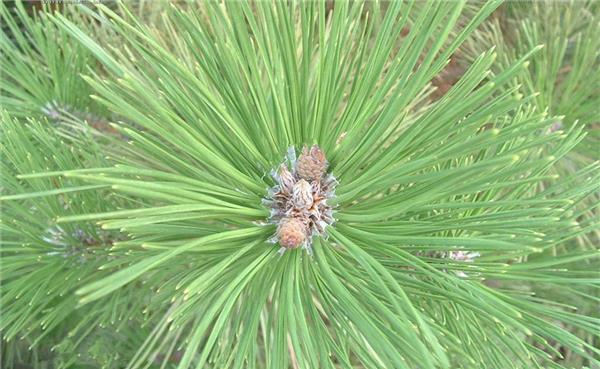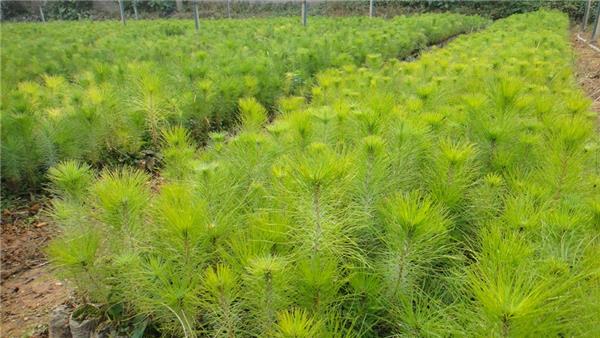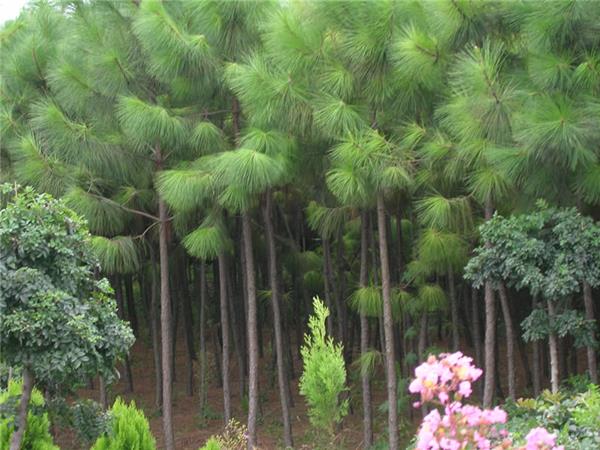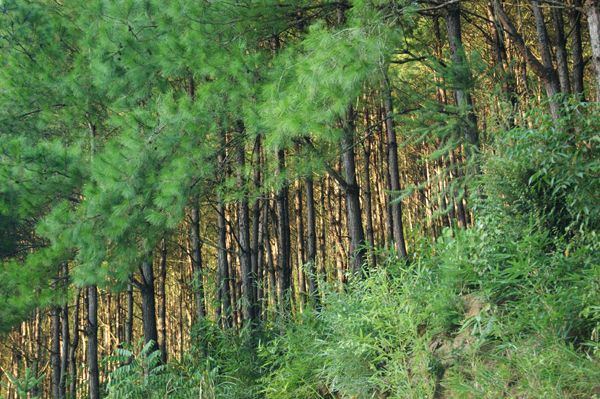Culture methods of Pinus massoniana
Breeding Masson pine is actually a relatively easy thing, in general, as long as you understand its habits, usually pay attention to care, you can feed it, far less delicate than tulips.
I. habits of Pinus massoniana
Masson pine is tall and majestic, Gucci posture, strong adaptability, strong wind resistance, smoke and dust resistance, fine-grained wood, strong wood texture, water resistance, suitable for mountain streams, valleys, rocks, poolside, roadside configuration and mountain afforestation. It is also suitable for planting alone in front of the court, beside the pavilion and between the rockery.
Pinus massoniana is a positive tree species, can not tolerate shade, like light and temperature. It is suitable to be born at an average annual temperature of 13-22 ℃, an annual precipitation of 800~1800mm, and an absolute lowest temperature less than-10 ℃. The root system is well developed, the main root is obvious, and there are root fungi. It is not strict with soil and likes slightly acidic soil, but it is afraid of waterlogging and is not resistant to salt and alkali. It can grow on thin scoured land of gravel, sandy soil, clay, ridges and sunny slopes, as well as steep rock crevices.

2. Cultivation and breeding of Pinus massoniana
Select fertile soil, good drainage, moist, loose sandy loam, loam as nursery land. After applying enough basic fertilizer to prepare the land and build the bed, we should cultivate carefully, break the mud block and flatten the bed surface. The sowing season is from early February to early March. Soak the seeds in 30 ℃ warm water for 12 hours and 24 hours before sowing. Strip sowing seedlings, strip distance of 10 meters, sowing ditch should be covered with a layer of fine soil. The seeds should be covered with thin soil after sowing, and they can be covered with charred ash, so that part of the seeds can still be seen, and then cover the grass. The seedlings were unearthed about 20-30 days after sowing. After most of the seedlings are unearthed, remove the cover grass. Special attention should be paid to keeping the seedling bed moist within 40 days after the seedlings are unearthed. From May to July, chemical fertilizer can be applied once or twice a month, and ammonium sulfate 2kg per mu each time. When Pinus massoniana seedlings are too dense, inter-seedling transplanting can be carried out, usually divided into two times, the first transplanting in mid-and late May, and the second transplanting in the first and middle of July. In cloudy or rainy days after rain, with a little lodging soil, not only can all survive, but also the growth of seedlings is good.

Daily maintenance and management of Pinus massoniana
1. Soil: Pinus massoniana cutting root nursery site should be open and sunny. Acid loam or sandy loam with gentle slope, close to water source and loose texture, with little or no stones or gravel.
two。 Sowing time: in order to ensure that pine seedlings can meet the requirements when cutting roots, the sowing time should be appropriately advanced, preferably from late February to early March, and no later than the end of March at the latest.
3. Water and fertilizer management: first, pay attention to film management in the seedling stage to prevent "burning" seedlings. 1 ∶ 1 ∶ Bordeaux solution was sprayed every 10-15 days for 2 to 3 consecutive times to prevent the occurrence of cataplexy. Light application of topdressing for 5 times, water application of urea 1 or 2 times after mid-June with a concentration of 0.3-0.5% is appropriate to promote the growth of seedlings. If the root is cut in the early and middle of September, nitrogen fertilizer will no longer be applied, only phosphorus fertilizer will be applied in water. The amount of water and fertilizer should be irrigated through the soil of the seedling bed.
4. Diseases and insect pests: Dendrolimus punctatus belongs to the family Lepidoptera, which is a common pest that harms Pinus massoniana, Pinus elliottii, loblolly pine and other pine species.

Q & An on Masson Pine Culture
1. Does Pinus massoniana need to be cut?
A: yes. In order to ensure the effect of root cutting, the height of the seedling should reach 12 cm, and the length of the main root should be more than 15 cm. Therefore, if the root and stem growth of the seedlings investigated before the summer drought has reached the requirements, the roots can be cut before the middle of July, otherwise the roots should be cut again from late August to early September after the arrival of the autumn rain; in the mountainous areas where there is no summer drought or drought above 800 meters above sea level, the root cutting time depends entirely on the seedling growth, but no later than the middle of September at the latest, otherwise the seedling growth time after root cutting is too short and the root cutting effect is not good.
two。 Are there any diseases and insect pests in Pinus massoniana?
A: yes. Dendrolimus punctatus belongs to the family Lepidoptera, which is a common pest against pine species such as Pinus massoniana, Pinus elliottii, Pinus elliottii and so on. Pesticides are needed to kill insects at this time.
3. Can Masson pine be made into bonsai?
A: yes. Prune the stump before putting it on the pot to remove excess branches and leaves to reduce water evaporation. After planting, put it in a sunny and well-ventilated place for maintenance. Summer should be properly shaded to avoid direct light, while sprinkling water to cool down. Do not accumulate water in the basin to prevent rotting roots. After survival, Pinus massoniana can not be shaped until it grows luxuriantly after one or two years of maintenance, otherwise the stump is easy to die.

All right, the above is the introduction of Masson Pine, after learning these little knowledge, I believe we all have a certain understanding of how to cultivate Masson Pine.
Related
- Wuhan Hospital Iron Tree Blooming Result Was Instantly Frightened by the Gardener Master
- Which variety of camellia is the most fragrant and best? Which one do you like best?
- What is the small blue coat, the breeding methods and matters needing attention of the succulent plant
- Dormancy time and maintenance management of succulent plants during dormancy
- Minas succulent how to raise, Minas succulent plant pictures
- What are the varieties of winter succulent plants
- How to raise succulent plants in twelve rolls? let's take a look at some experience of breeding twelve rolls.
- Attention should be paid to water control for succulent plants during dormant period (winter and summer)
- Watering experience of twelve rolls of succulent plants
- Techniques for fertilizing succulent plants. An article will let you know how to fertilize succulent plants.



